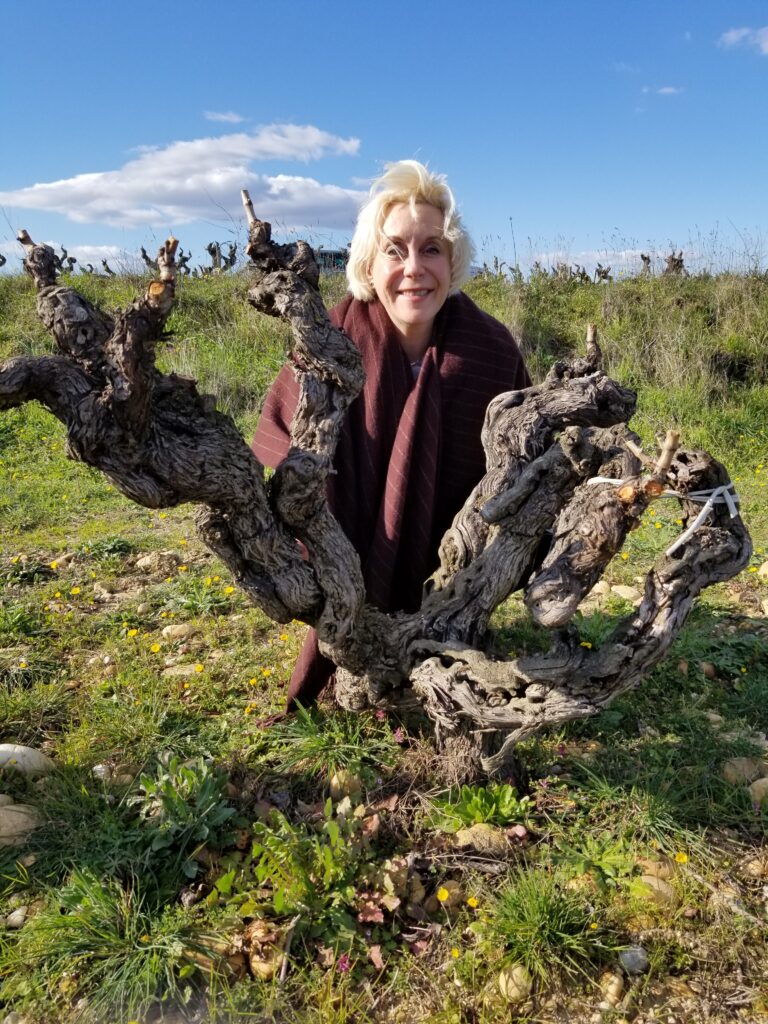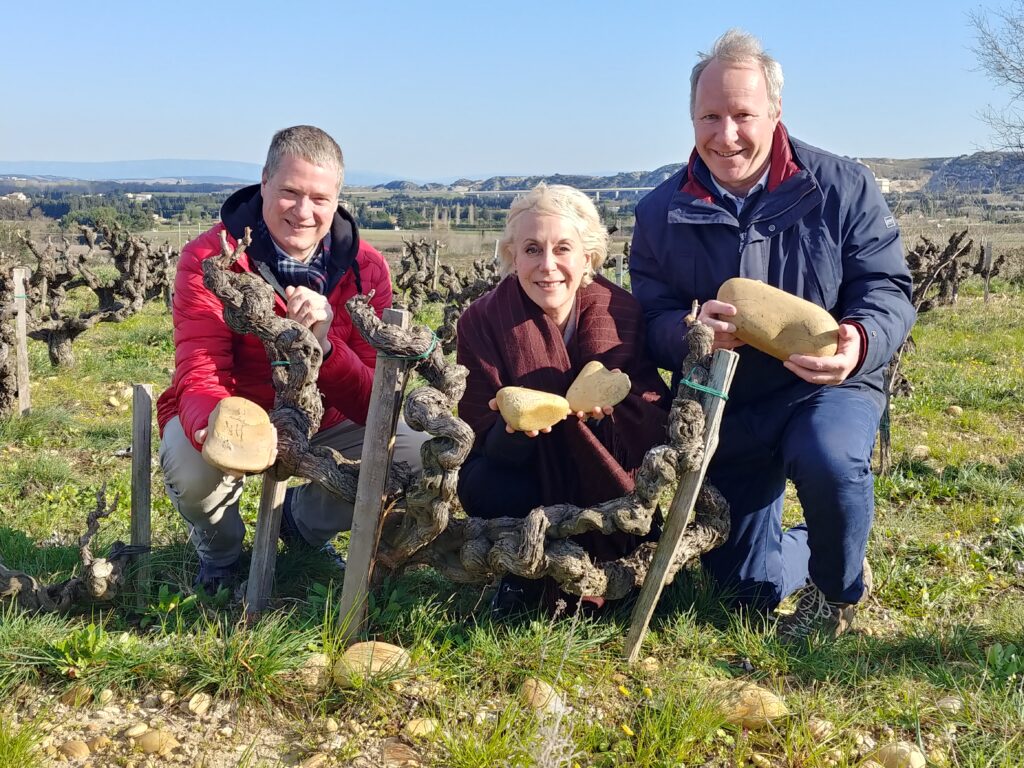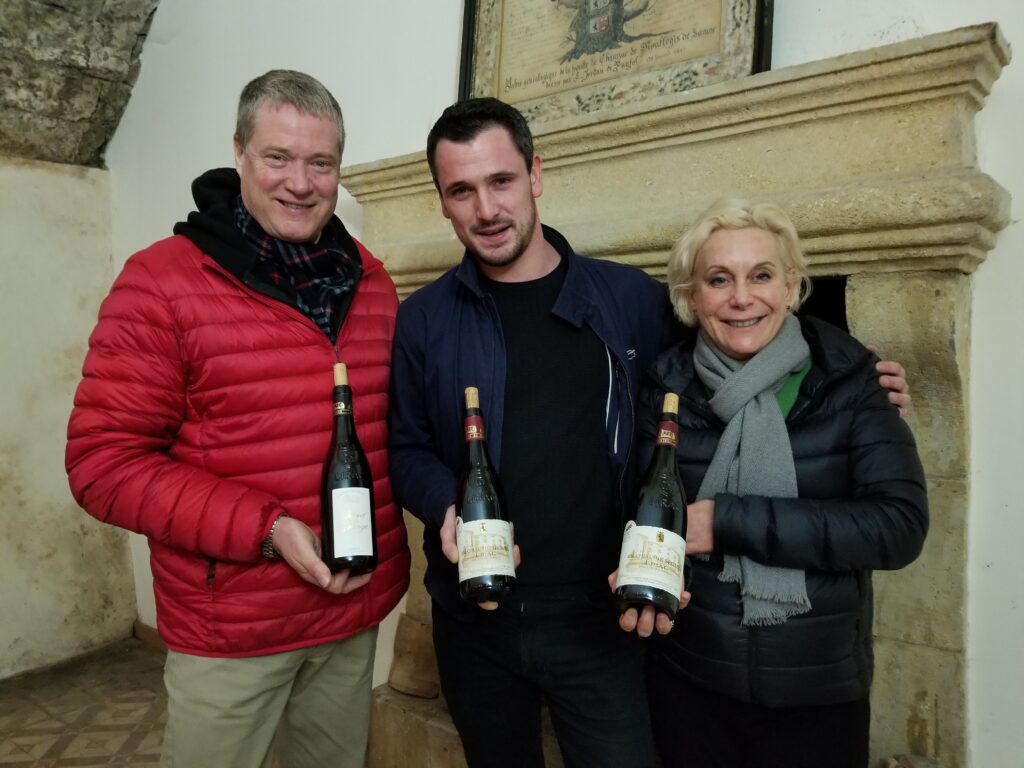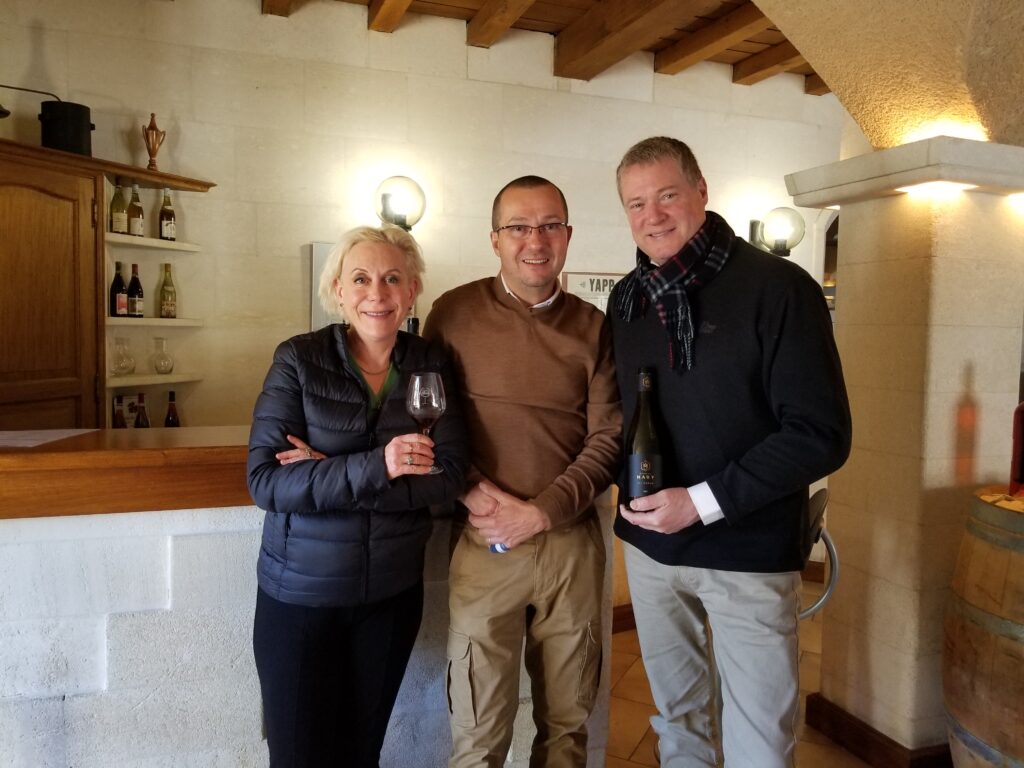One of the Côtes du Rhône’s first cru appellations (established in 1947), AOC Lirac is a wine lover’s gem. The wines were prized among European nobility and the Avignon papacy in the 14th and 15th centuries. In the 18th century, local magistrates in Roquemaure started to authentic the origin of Lirac wines by branding the casks with “C.d.R.” Lirac wines were the first in the region to use the term “Côtes du Rhône.” Today, Lirac wines continue to draw a strong following among sommeliers and other wine aficionados.
Lirac is rare among the 17 Rhône crus for its range of red, white, and smaller amounts of rosé wines. AOC guidelines require all to be blends, mainly using indigenous varieties. Red wines, which comprise 85 percent of Lirac’s production, must contain a minimum of 40 percent Grenache. The remaining amounts are usually Syrah, Carignan, Mourvèdre or Cinsault (the latter is popular for rosés). Around 10 percent of production is white. Clairette is the superstar white variety in Lirac followed by Bourboulenc, Viognier, Marsanne, Roussanne and, to a smaller degree, Picpoul and Ugni Blanc. The white wines lean toward aromatic with balanced acidity. While overshadowed by the reds in the global market, Lirac’s whites are well worth seeking out.

A windy day among the vineyards in Lirac. In this vineyard vines date back 140 years.
During our visit in early March 2020 (thankfully before the travel shutdown), a robust mistral blew in, practically knocking us over. The locals are used to the mistral wind which average 180 days of the year. Lirac’s climate in the southern Rhône Valley is Mediterranean, but a mistral can have you reaching for scarves and jackets even under a brilliant sunny sky.
These winds, unique to this part of France, combined with more than 220 days of sunshine, play a key role in shaping Lirac’s terroir. They help purify the air to keep humidity low, chase away pests and nurture healthy vines.

The round river rocks in Lirac’s vineyards are called “galet roules”
Another key factor are Lirac’s three soils. Alluvial river soils scattered with large round stones, known as galets roulés, produce intense red wines with dark fruit and savory spices, offering long aging potential. Limestone soils deliver minerality and aromatics, a hallmark of the whites which are fruit and floral with balanced acidity. Sandy soils produce fresh lighter wines, low in tannins, ideal for Lirac’s fruitier style of rosés

Sunday at the covered market in Avignon
Avignon serves as a great base to visit both Lirac and Tavel, its next -door neighbor which only produces rosé wines. If you stay in Avignon, a visit to the Palais du Papes (the Popes’ Palace) is a must, and allow plenty of time (advanced reservations are suggested.). We had the chance to spend a Sunday in Avignon where locals and tourists gather at the covered market for casual Sunday dining or to pick up provisions. It’s great people watching!

A selection of Lirac wines we discussed on The Connected Table Sips
We visited with several Lirac producers during our trip. When asked how they would define “Lirac style,” they all underscored “freshness and lush” as a backbone of the wines and what they refer to as “the Rhône Valley’s “right bank style.” In contrast, left bank wines, such as those in Chateauneuf-du-Pape just across the river were described as “concentrated and more intense.” A number of producers in Chateauneuf-du-Pape, have invested in vineyards in Lirac.

In the vineyards at Chateau de Montfaucon with owner, Rodolphe du Pins

For more information visit www.vins-rhone.com
Lirac is home to many independent wineries; many are family-run Here are the producers we met and their U.S. importers.
Château de Ségriès. This historic winery is one of the first in the appellation. by Count Henri de Régis de Gatimel inherited Château de Ségriès in 1940 and was one of the first to replant vines in the region. The Count was the first to petition that Lirac be awarded AOC status, which occurred in 1947. (U.S. importer: Kysela Pere & Fils).
Château de Montfaucon. The center piece of this estate is a lovingly restored fortress dating to the 12th century owned by a noble family. Proprietor Rodolphe du Pins showed us a pre-phylloxera vineyard dating back 140 years. (Winebow)
Domaine Maby. Owned by the Maby family for generations, the estate’s sixty acres covers Lirac, Tavel and Côtes du Rhône. (DB Wine Selections)
Domaine La Lôyane. Started by a family of growers dating back four generations, the winery is run by Romain Dubois and his wife, Laure. Organically run, this winery is home to five vineyards including one whose Grenache vines are 150 years-old! (Elixir Wine Group)
Domaine Lafond Roc-Epine The Lafond family has been making wine in the Rhône Valley since 1780. “Roc-Epine” was established in 1970 and started to bottle wine in 1978. The name commemorates “Roquepine,” a famous horse race. (Skurnik Wines)
Château Mont-Redon. The original name, “Mourredon,” dates to 1344, when the property was part of the Pope’s land; it was recognized as a vineyard in the 18th century. Today this winery, is owned by the largest landowner in Chateauneuf-du-Pape who saw the potential in making wine in Lirac. (F. Wildman)
La Maison Ogier. In 800 A.D. with “Ogier the Dane” fought with Charlemagne’s soldiers and settled in the area. The family entered the wine business in 1859. Ogier was founded in 1948. Today it is a leading negociant in the Rhône Valley. (Folio Fine Wine Partners)
More info: www.vins-rhone.com

With Laure Dubois, Domaine la Lôyane, and Jean-Baptise La Fond, Lafond Roc-Epine at Restaurant la Louisa in Lirac.

At La Fourchette restaurant in Avignon with Pierre Fabre, Château Mont-Redon, and François Miquel, Ogier
Listen to The Connected Table Sips. Discover Lirac!
AOC Lirac on the Rhône River’s right bank is a small cru appellation producing lush reds and aromatic whites. Lirac has an ideal terroir: over 200 days of sun, purifying mistral winds and three different soils: rocky galets, calcareous and sandy, with most vineyards organically farmed. AOC Lirac Co-President Rodolphe de Pins is owner of Château de Montfaucon, where some vineyards date back 140 years. He discusses how Lirac’s different soils shape the character of its wines. www.vins-rhone.com
One of the Côtes du Rhône’s first cru appellations since 1947, AOC Lirac is a wine lover’s rare gem, just northwest of Avignon. Lirac wines were prized among Europe’s nobility and the Avignon papacy in the 14th century. Lirac is rare among the 17 Rhône crus for its range of red, white and smaller amounts of rosé wines made from blends of mainly indigenous varieties. Château de Montfaucon’s Rodolphe de Pins, AOC Lirac Co-President, discusses the region and styles of wine. www.vins-rhone.com



